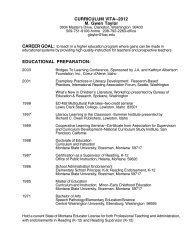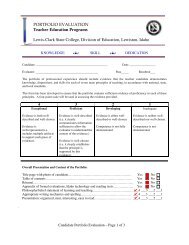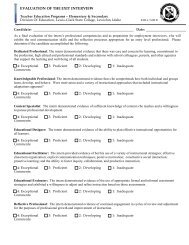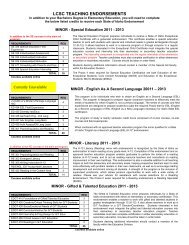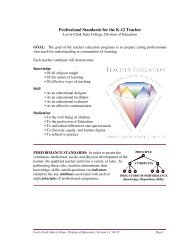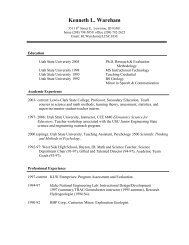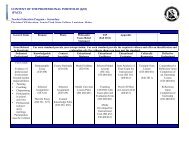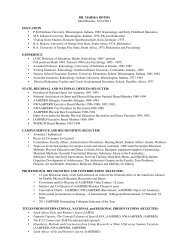PACE - LCSC Education Division - Lewis-Clark State College
PACE - LCSC Education Division - Lewis-Clark State College
PACE - LCSC Education Division - Lewis-Clark State College
You also want an ePaper? Increase the reach of your titles
YUMPU automatically turns print PDFs into web optimized ePapers that Google loves.
her/his feet” (i.e., capable of making necessary adjustments to the planned learningexperience).(K, S)• The teacher can represent and use differing viewpoints, theories, "ways of knowing" and methodsof inquiry in his/her teaching of subject matter concepts. (K, S)• The teacher stimulates student reflection on prior knowledge and links new ideas to alreadyfamiliar ideas, making connections to students' experiences, providing opportunities for activeengagement, manipulation, and testing of ideas and materials, and encouraging students to assumeresponsibility for shaping their learning tasks. (K, S)• The teacher constantly monitors and adjusts strategies in response to learner feedback usingmultiple teaching and learning strategies to engage students in active learning. (K, S)• The teacher accesses students' thinking and experiences as a basis for instructional activities by,for example, encouraging discussion, listening and responding to group interaction, and elicitingsamples of student thinking orally and in writing and uses a variety of media communication tools,including audio-visual aids and computers, to enrich learning opportunities. (K, S)• The teacher integrates multiple perspectives into discussions of subject matter, including attentionto students’ personal, family, and community experiences and cultural norms. (K, S, D)• The teacher helps students assume responsibility for identifying and using learning resources. (K,S)2. The teacher utilizes effective, classroom organization skills to establish and facilitate engaging and meaningfullearning environments that support the intellectual, social, and physical development of students.• The teacher understands and exhibits the principles of effective classroom management and strategiesthat promote positive relationships, cooperation, conflict resolution, and purposeful learning. (K, S)• The teacher takes responsibility for establishing a positive climate in the classroom and participates inmaintaining such a climate in the school as whole. (K, S)• The teacher values flexibility and reciprocity in the teaching process as necessary for adaptinginstruction to student responses, ideas, and needs while creating a positive learning environment wherestudents develop self-worth. (K, S, D)• The teacher organizes, prepares students for, and monitors independent and group work that allows forfull and varied participation of all individuals. (K, S)• The teacher maximizes class productivity by organizing, allocating, and managing the resources oftime, space, and activities and by clearly communicating curriculum goals and objectives. (K, S)3. The teacher utilizes effective, communication techniques to establish and facilitate engaging and meaningfullearning environments that support the intellectual, social, and physical development of students.• The teacher knows about and can use effective verbal, nonverbal, and media communicationtechniques and tools including audio-visual technology, computers, and the Internet, to enrich learningopportunities. (K, S)• The teacher is a thoughtful and responsive listener. (K, S, D)• The teacher appreciates the cultural dimensions of communication, responds appropriately, and seeksto foster culturally sensitive communication by and among all students in the class. (K, D)• The teacher appreciates the ways in which people seek to communicate and recognizes the power oflanguage for fostering self-expression, identity development, and learning. (K, D)• The teacher talks with and listens to the student, is sensitive and responsive to clues of distress,investigates situations, and seeks outside help as needed and appropriate to remedy problems. (K, S)• The teacher effectively uses verbal (reads, writes, listens, speaks), nonverbal, and mediacommunication techniques with students to foster active inquiry, collaboration, and supportiveinteraction in the classroom. (K,S)67



